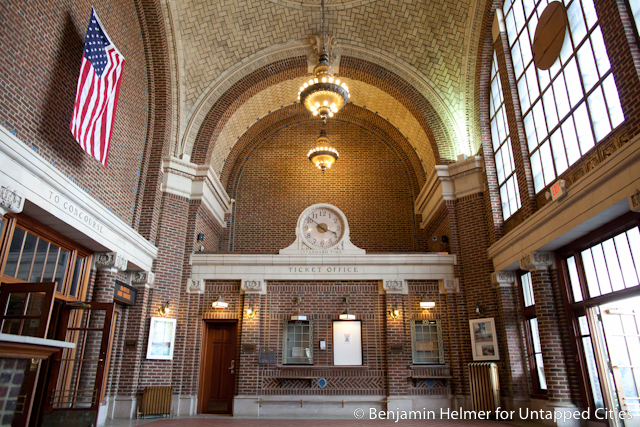
As you pull into the Yonkers train station, you couldn’t feel farther from Grand Central Terminal. A few sleepy platforms greet you as you exit the train. Step down the stairs, however, and you’ll enter a vaulted space with arched windows and decadent chandeliers. Hiding beneath the two elevated platforms you’ll find an elaborate station that not only predates construction of Grand Central Terminal, but was built by the same firm, Warren and Wetmore. Renovated in 2003, you’ll see well-preserved features of the original 1911 construction, which some believe to be a “testing ground” for characteristics later incorporated into the renown Manhattan terminal.
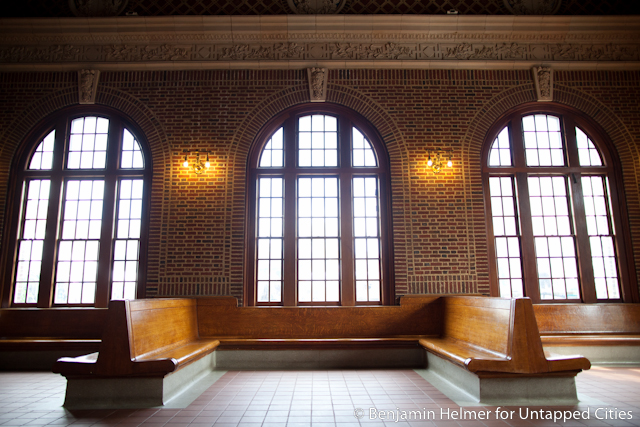
Unlike it’s Manhattan counterpart, this station is low profile, with a portion of the station built under the very rail bridge used for the boarding platform. Areas of the station used for ticket machines, vending, the MTA Police Station, and the original location of the taxi stand are under the bridge, evident by the exposed steel beams in the ceiling. The front portion of Yonkers Station is the only roof to rise above the elevated track beds, offering arched ceilings, chandeliers, and double-pained glass windows, much like those found in Grand Central. The ticket windows are also designed in a similar style to those found in Grand Central, although more brick is used.
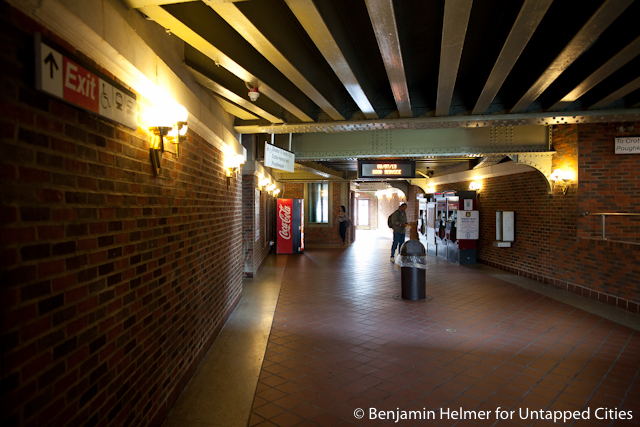
The insight into the origins of Grand Central’s design is not the only significance of Yonkers Station. 62 years before its construction, the New York Central Railroad began operation. While quickly putting the local stage coaches out of business, it wasn’t until the 1880’s that steamboats fell to the railroads. Until that time, steam travel was reliable and comfortable, offering no major incentive for waterway passengers to change their habits. However, one particularly foggy morning, as commuters waited on the docks, the ship failed to port. The train would normally halt only briefly, but today, perhaps seeing the frustration on the faces of the lingering steamboat customers, he waited. One by one, the dock-bound customers grew impatient. Eventually, the entire crowd abandoned the dock in favor of the train. That morning, an hour after the New York Central train arrived at Grand Central, the steamboat made port in Yonkers. From that point on, steam travel in the area flatlined.
The station has more stories to tell, and has seen many famous residents pass through it, from Ella Fitzgerald, to the inventor of plastic, and the broadcaster of first FM radio transmission. For those looking for more on the station itself, take a tour through the photographs below.
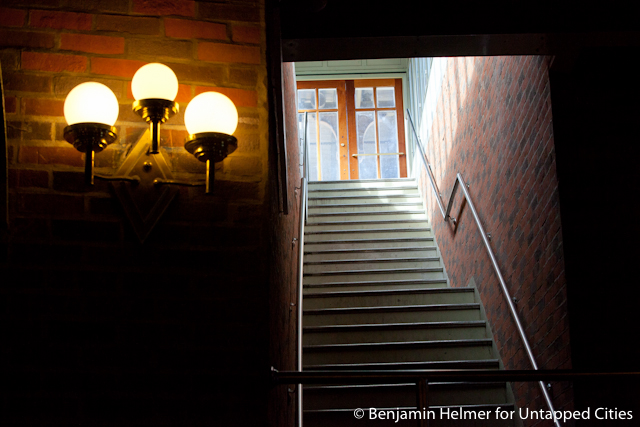 The stairs to the Poughkeepsie-bound platform. The station area under the tracks offers moody, dim lighting, in stark contrast with the midday sun, as well as the main waiting area, which is flanked with large windows.
The stairs to the Poughkeepsie-bound platform. The station area under the tracks offers moody, dim lighting, in stark contrast with the midday sun, as well as the main waiting area, which is flanked with large windows.
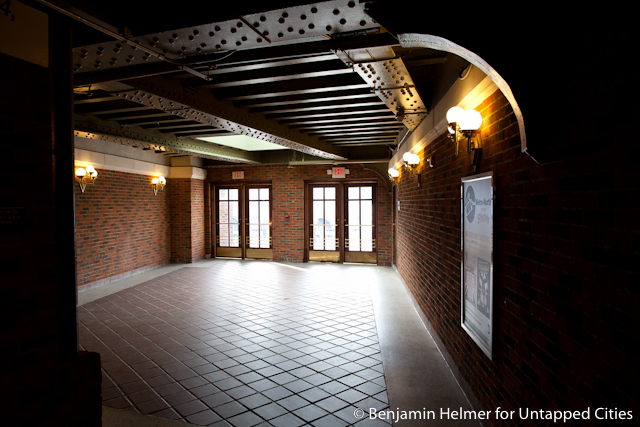 The rear entrance (exiting to the River) was only later added with the renovations, and exits to the recent housing developments, and ferry landing.
The rear entrance (exiting to the River) was only later added with the renovations, and exits to the recent housing developments, and ferry landing.
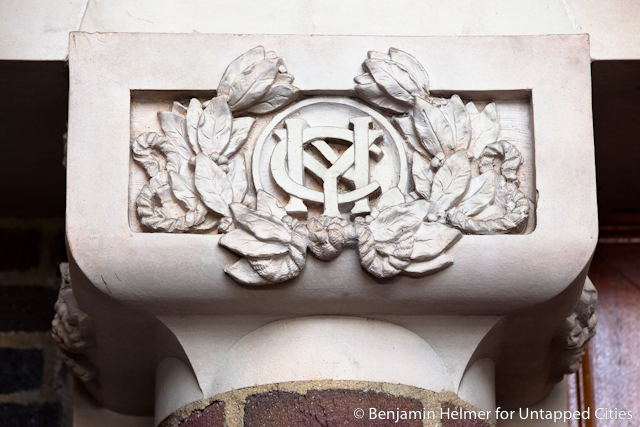 Just one of the many details around the station, offering the New York Central Railroad logo. Similar relics of this now defunct company can be found at other stations, including the Poughkeepsie station, the northern terminus of the Hudson Line.
Just one of the many details around the station, offering the New York Central Railroad logo. Similar relics of this now defunct company can be found at other stations, including the Poughkeepsie station, the northern terminus of the Hudson Line.
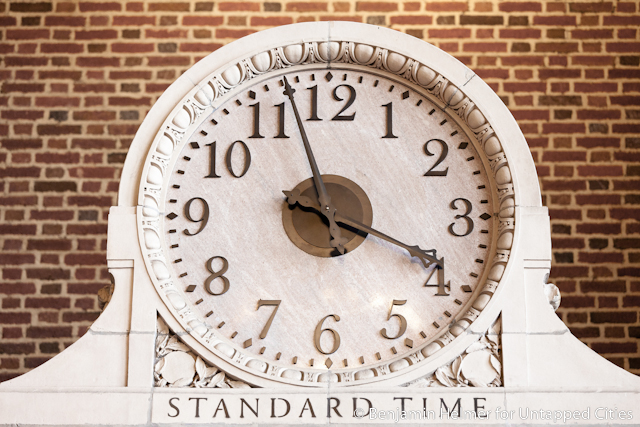 The clock above the ticket counters. There is another clock above the exterior, which is more reminiscent of the iconic clock of Grand Central.
The clock above the ticket counters. There is another clock above the exterior, which is more reminiscent of the iconic clock of Grand Central.
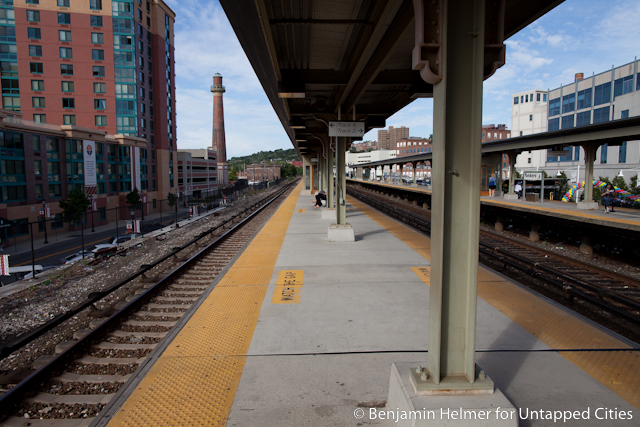 The two platforms of Yonkers Station, which service both Metro North and Amtrak trains. This photo looks North, with the Hudson River about 200 feet to the left. The smoke stack-looking tower in the background is mimicked by a smaller version at the rear entrance of Yonkers Station. Just visible in the rear right of the background is the Kawasaki Factory, where some previous subway cars are made for the MTA, as well as upcoming PATH models.
The two platforms of Yonkers Station, which service both Metro North and Amtrak trains. This photo looks North, with the Hudson River about 200 feet to the left. The smoke stack-looking tower in the background is mimicked by a smaller version at the rear entrance of Yonkers Station. Just visible in the rear right of the background is the Kawasaki Factory, where some previous subway cars are made for the MTA, as well as upcoming PATH models.
Get in touch with the author @atomox.





